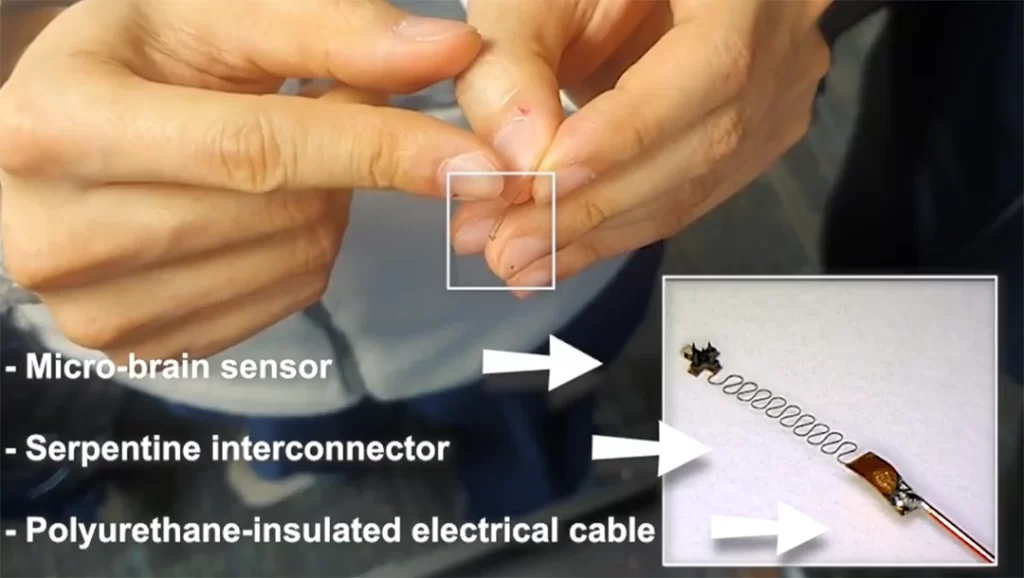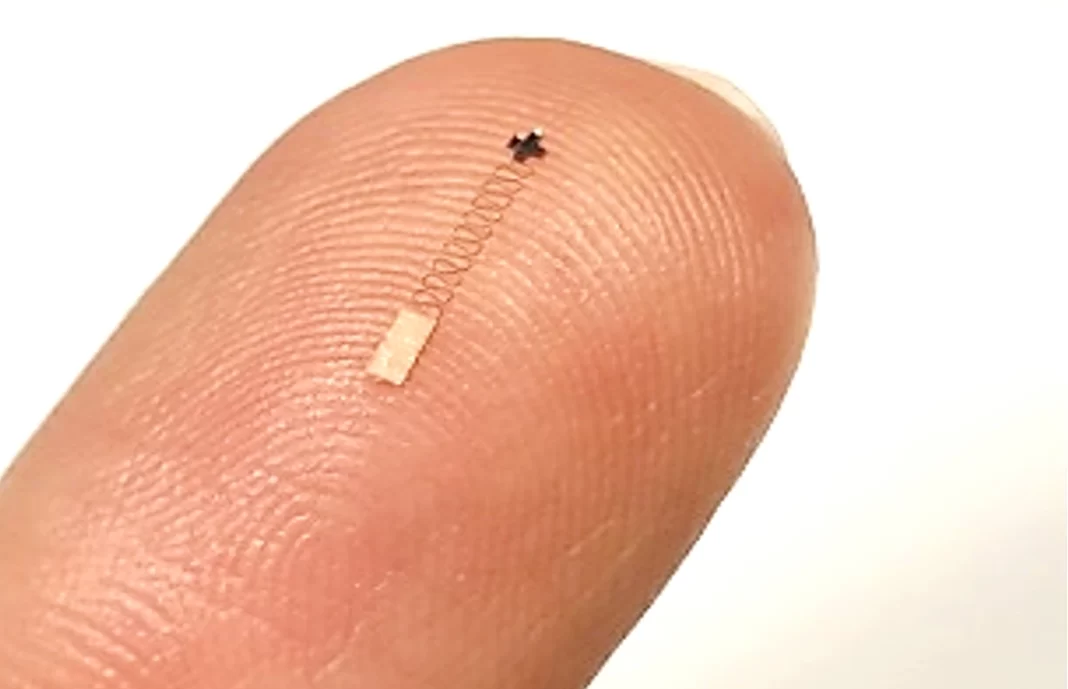You won’t see it. You won’t feel it. But this tiny device now lets you control digital systems using only your brain — with no surgery, no wires, and no need to shave your head.
A team of researchers at the Georgia Institute of Technology has developed a minimally invasive brain–computer interface (BCI) that fits discreetly between hair follicles and reads neural signals with more than 96% accuracy. The peer-reviewed study was published on 8 April 2024 in the Proceedings of the National Academy of Sciences (PNAS), following approval on 18 March and submission on 9 January.
The device is built around a flexible microneedle array that is thinner than one millimetre. It is designed to be placed directly on the scalp, slipping between strands of hair and penetrating just beneath the skin’s surface. This approach eliminates the need for shaving, conductive gels, or surgical procedures. Once attached, the patch forms a secure and low-noise interface with the brain’s electrical signals. The neural data is transmitted wirelessly via Bluetooth Low Energy (BLE) using a built-in low-power chip and battery.

To prove its concept, the team conducted a series of live trials. Participants wore the patch while interacting with a custom-built augmented reality interface. They were able to trigger digital commands… such as answering calls or selecting options — by simply focusing their eyes on specific elements of the screen. The system tracked visual attention and decoded brain activity in real-time, all while the subjects walked, moved, and carried on with natural behaviour. The device maintained signal accuracy for up to twelve continuous hours.
The key innovation lies in its ability to operate reliably in uncontrolled, mobile environments. Most current BCI systems are limited to lab settings and often rely on headgear, wires, and gel-based sensors. Others, like Neuralink, require brain surgery and implant electrodes beneath the skull. In contrast, the Georgia Tech patch is wearable, flexible, and safe for long-term use. Its microneedle design also avoids the limitations of conventional dry electrodes, which can slip, irritate the skin, or degrade in performance over time. The result is a system that offers both accuracy and comfort, even during daily activities.

This breakthrough holds real promise for people with severe disabilities or neurological conditions. Individuals living with ALS, paralysis, or locked-in syndrome could soon control digital tools, communicate, or navigate their environment — all without using their hands or speech. The technology could also transform mainstream experiences in augmented and virtual reality, eliminating the need for touch controllers or gesture-based input. It opens a path toward hands-free interaction with phones, smart homes, and digital environments, powered entirely by thought.
However, the technology also raises critical questions. Brain data is deeply personal. If devices like this become widespread, how will privacy be protected? Who owns the data? Could it be used for surveillance or profiling? These ethical issues are not theoretical — they are real and urgent, and the researchers have called for clear regulatory frameworks as this field develops.
For now, the device remains in the research phase. The study confirms the system’s safety, signal fidelity, and mobility, but it is not yet commercially available. More trials are planned, and further development will be needed before it enters clinical or consumer markets.
Dr. Woon-Hong Yeo, lead author of the study, said the goal is to build BCI systems that are wearable, stable, and usable in the real world. His team’s design may be the closest step yet to making brain control a part of everyday life.
Full study: https://www.pnas.org/doi/10.1073/pnas.2419304122





